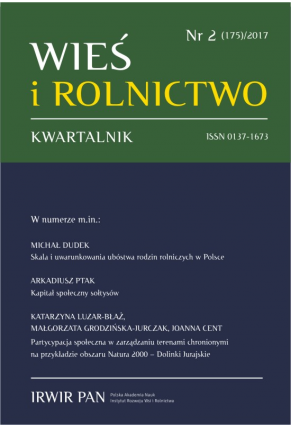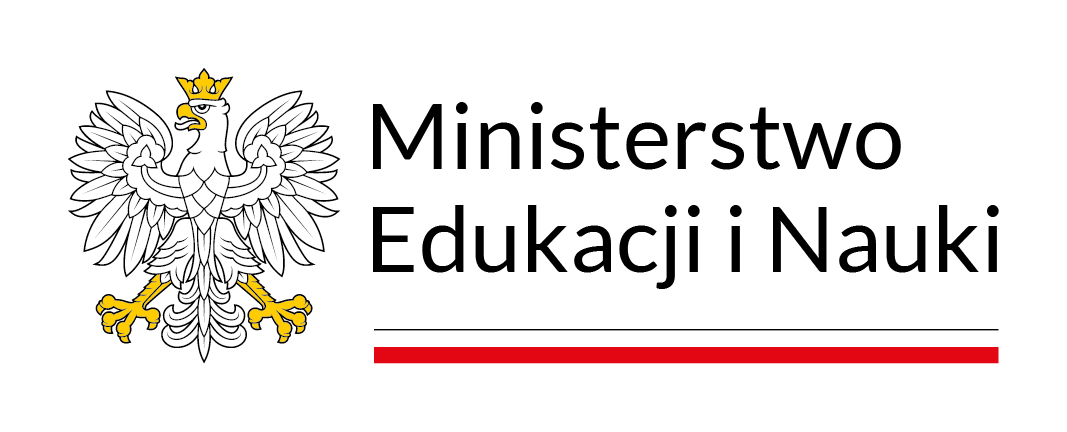Impact of Organic Farming on Natural Environment within the Concept of Sustainable Development
DOI:
https://doi.org/10.53098/wir022017/07Keywords:
organic farming, sustainable development, water, soil, biodiversityAbstract
Modern agriculture has reached tremendous productivity and effectiveness; however, it very often happens that intensive production causes serious environmental concerns and compromises the quality of final product. Due to increasing consumer awareness, people more frequently choose organic products as a healthier and safer option. Nevertheless, organic farming is not only about the production of superior quality food, it is also a method of environmental protection and sustainable resource management. Water, soil, biological diversity and landscape are just some of the natural components that are being constantly transformed as a result of farming. Conventional farming often is the main cause of environment degradation that leads to serious consequences. Therefore, it is vital to underline the importance of organic farming in the protection of environment and natural resources that are essential for humans in the process of food production. The main aim of this article is to evaluate the effect of organic farming on water, soil, biological diversity as well as landscape. Moreover, this research is also an attempt at implanting organic agriculture within the concept of sustainable development.References
Aneja V.P., Schlesinger W., Erisman J.W. (2008). Farming pollution. Nature Geoscience, 1, 409–411. DOI: https://doi.org/10.1038/ngeo236
Barański M., Średnicka-Tober D., Volakakis N., Seal C., Sanderson R., Stewart G.B. i in. (2014). Higher antioxidant and lower cadmium concentrations and lower incidence of pesticide residues in organically grown crops: a systematic literature review and meta-analyses. British Journal of Nutrition, 112, 5, 794–811. DOI: https://doi.org/10.1017/S0007114514001366
Bhat A.K. (2013). Preserving microbial diversity of soil ecosystem: A key to sustainable productivity. International Journal of Current Microbiology and Applied Sciences, 2, 8, 85–101.
Blunden J., Aneja V.P., Lonneman W.A. (2005). Characterization of non-methane volatile organic compounds at swine facilities in eastern North Carolina. Atmospheric Environment, 39, 6707–6718. DOI: https://doi.org/10.1016/j.atmosenv.2005.03.053
Blunden J., Aneja V.P., Westerman P.W. (2008). Measurement and analysis of ammonia and hydrogen sulfide emissions from a mechanically ventilated swine confinement building in North Carolina. Atmospheric Environment, 42, 14, 3315–3331. DOI: https://doi.org/10.1016/j.atmosenv.2007.06.040
Borys T. (2011). Zrównoważony rozwój – jak rozpoznać ład zintegrowany. Problemy Ekorozwoju, 6, 2, 75–81.
Buckley D.H., Schmidt T.M. (2001). The structure of microbial communities in soil and the lasting impact of cultivation. Microbial Ecology, 42, 11–21. DOI: https://doi.org/10.1007/s002480000108
Chowdhury A., Pradhan S., Saha M., Sanya N. (2008). Impact of pesticides on soil microbiological parameters and possible bioremediation strategies. Indian Journal of Microbiology, 48, 114–127. DOI: https://doi.org/10.1007/s12088-008-0011-8
Ciarko M., Paluch-Dybek A. (2014). Ład ekonomiczny, środowiskowy oraz społeczny triadą zrównoważonego rozwoju. Współczesne Problemy Ekonomiczne, 9, 16–27.
Collins A.L., Anthony S.G. (2008). Assessing the likelihood of catchments across England and Wales meeting ‘good ecological status’ due to sediment contributions from agricultural sources. Environmental Science and Policy, 11, 163–170. DOI: https://doi.org/10.1016/j.envsci.2007.07.008
FAO (2006). Livestock’s Long Shadow; United Nations, Food and Agriculture Organization, ftp://ftp.fao.org/docrep/fao/010/a0701e/a0701e.pdf [dostęp: 05.07.2017].
Feledyn-Szewczyk B. (2012). Porównanie zdolności konkurencyjnych w stosunku do chwastów oraz plonów ziarna pszenicy orkisz (triticum Aestivum ssp. Spelta) z odmianami pszenicy zwyczajnej (triticum Aestivum ssp. Vulgare) w ekologicznym systemie produkcji. Agricultura, Alimentaria, Piscaria et Zootechnica, 293, 21, 13–26.
Finesilver T., Johns T., Hill S. (1989). Comparison of Food Quality of Organically Grown Versus Conventionally Grown Plant Foods. Quebec, Canada: Ecological Agriculture Projects, McGill University (Macdonald Campus).
Ghimire A. (2002). A Review on Organic Farming for Sustainable Agriculture. Rampur, Chitwan, Nepal: Department of Agriculture and Rural Sociology, Institute of Agriculture and Animal Science.
Gnusowski B., Nowacka A., Malec M. (2006). Pozostałości środków ochrony roślin w polskich płodach rolnych pochodzących z różnych systemów gospodarowania w roku 2005. Postępy w Ochronie Roślin, 46, 2, 761–764.
Gustavsson J., Cederberg C., Sonesson U., Van Otterdijk R., Meybeck A. (2011). Global Food Losses and Food Waste. Rom: Food and Agriculture Organization of the United Nations.
Gutkowska K., Żakowska-Biernas S. (2002). Rolnictwo ekologiczne w Polsce i na świecie. Aspekty prawne, terminologiczne, rynkowe. Wieś i Rolnictwo, 1, 52–53.
Hansen H. (1981). Comparison of chemical composition and taste of biodynamically and conventionally grown vegetables. Qualitas Planatarum. Plant Food for Human Nutrition, 30, 203–211. DOI: https://doi.org/10.1007/BF01094025
Hazell P., Wood S. (2008). Drivers of change in global agriculture. Philosophical Transactions of the Royal Society B: Biological Sciences, 363, 1491, 495–515. DOI: https://doi.org/10.1098/rstb.2007.2166
House of Lords Select Committee on European Communities (1999). House of Lords Committee on European Communities Sixteenth Report. Organic Farming and the European Union. London.
Ismal A., Fun C.F. (2003). Determination of vitamin c, β-carotene and riboflavin contents in five green vegetables organically and conventionally grown. Malaysian Journal of Nutrition, 9, 1, 31–39.
Kasprzyk-Horden B., Dinsdale R., Guwy A.J. (2008). The occurrence of pharmaceuticals, personal care products, endocrine disrupters and illicit drugs in surface water in South Wales, UK. Water Research, 42, 3498–3518. DOI: https://doi.org/10.1016/j.watres.2008.04.026
LaSalle T. i in. (2008). The organic Green revolution. Rodale Institute. https://www.researchgate.net/publication/252336353_The_Organic_Green_Revolution [dostęp: 05.07.2017].
Łyszcz M., Gałązka A. (2016). Wybrane metody molekularne wykorzystywane w ocenie bioróżnorodności mikroorganizmów glebowych, Postępy Mikrobiologii, 55, 3, 309–319.
Neuerburg W., Padel S. i in. (1994). Rolnictwo ekologiczne w praktyce (tłum. W. Fortuna). Warszawa: Stowarzyszenie Ekoland.
Nielsen S., Minchin T., Kimber S., Zwieten L., Gilbert J., Munroe P., Joseph S., Thomas T. (2014). Comparative analysis of the microbial communities in agricultural soil amended with enhanced biochars or traditional fertilizers. Agriculture, Ecosystems and Environment, 191, 73–82. DOI: https://doi.org/10.1016/j.agee.2014.04.006
The Organic Center (2008). Do Organic Fruits and Vegetables Taste Better Than Conventional Products? https://organic-center.org/reportfiles/Taste2Pager.pdf [dostęp: 05.07.2017].
Rembiałkowska E. (2007). Walory żywności z produkcji ekologicznej. Warszawa: Wydawnictwo SGGW.
Rozporządzenie Komisji (WE) nr 889/2008 z dnia 5 września 2008 r. ustanawiające szczegółowe zasady wdrażania rozporządzenia Rady (WE) nr 834/2007 w sprawie produkcji ekologicznej i znakowania produktów ekologicznych w odniesieniu do produkcji ekologicznej, znakowania i kontroli (Dz.U. L 250 z 18.09.2008).
Rozporządzenie Rady EWG nr 2092/91 w sprawie rolnictwa ekologicznego oraz znakowania jego produktów i środków spożywczych.
Runowski H. (2004). Gospodarstwo ekologiczne w zrównoważonym rozwoju rolnictwa i obszarów wiejskich. Wieś i Rolnictwo, 3, 25–28.
Siebeneicher G.E. (1997). Podręcznik rolnictwa ekologicznego (tłum. zbiorowe pod red. D. Ostrowskiej). Warszawa: Wydawnictwo Naukowe PWN.
Smagacz J. (2000). Rola zmianowania w rolnictwie zrównoważonym. Pamiętnik Puławski, 120, 411–414.
Tinker P.B. (2001). Organic Farming – Nutrient Management and Productivity. York, United Kingdom: The International Fertiliser Society, Proceedings No. 471.
Tyburski J., Żakowska-Biemans S. (2007). Wprowadzenie do rolnictwa ekologicznego. Warszawa: Wydawnictwo SGGW.
Vaarst M. (2010). Organic farming as a development strategy: Who are interested and who are not? Journal of Sustainable Development, 30, 1, 38–50. DOI: https://doi.org/10.5539/jsd.v3n1p38
Wilkin J. (2003). Podstawy strategii zintegrowanego rozwoju rolnictwa i obszarów wiejskich w Polsce. Warszawa: Uniwersytet Warszawski, Wydział Nauk Ekonomicznych.
Williams C.M. (2002). Nutritional quality of organic food: Shades of grey or shades of green? Proceedings of the Nutrition Society, 61, 19–24. DOI: https://doi.org/10.1079/PNS2001126
World Health Organisation (WHO). http://www.who.int/healthy_settings/about/en/ [dostęp: 05.07.2017].
Woś A., Zegar J.S. (2002). Rolnictwo społecznie zrównoważone. Warszawa: Instytut Ekonomiki Rolnictwa i Gospodarki Żywnościowej.
Wright S. (1997). Europe goes organic. Food Ingredients Europe, 3, 39–43.
Zimny L. (2007). Definicja i podziały systemów rolniczych. Acta Agrophysica, 10, 2, 507–518.
Downloads
Article file downloads
Pages
How to Cite
Issue
Section
License
Copyright (c) 2017 Wieś i Rolnictwo

This work is licensed under a Creative Commons Attribution 4.0 International License.










